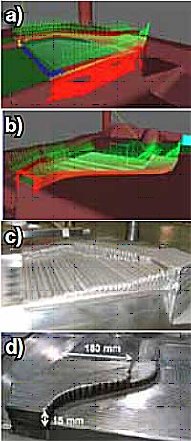Laser Assisted Processes for Tool Manufacturing
From the Spring 2013 Issue of the AILU Magazine

In principle, the advantages of using laser technology for surface treatment in tool making and mould construction have been known since the mid 1980´s, when the transfer of laser hardening technology from university research into industrial application began.However, industrial implementation was hindered by high investment costs, limited acceptance by toolmakers and the absence of industrial system technology to implement it.
Today laser hardening is often used to improve wear resistance of selected tool areas; typically the edges of cutting tools, pinch edges, contact surfaces of hemming nests, closing areas of injection moulds and radii of deep drawing tools. Laser hardening is now well understood and laser systems for hardening have been commercially available for years.
A second laser surface technology which also has a high potential for applications in tool making is laser cladding. Examples are the modification of dies and moulds, the production of hard and wear resistant layers on soft base materials, repairing of sealing edges of plastic moulds and the near net shape manufacturing of cutting edges.
Laser hardening and cladding have proved themselves at an industrial level and successful technology transfer into industry has been made. The paper presents state-of-the-art system technology for laser surface treatment. The latest diode laser technology in combination with a special processing head that is easily adaptable for both hardening and the cladding, is the basis for economic and flexible use.
Peter Hoffmann, Roland Dierken and Tobias Heinze, ERLAS Erlanger Lasertechnik GmbH, Erlangen, Germany
Images: The pictures show the process of modifying a stainless steel tool for molding plastic components. a, b) The initial profile of the tool and the intended final profile and the intended layers of cladding are visualised. c, d) related views of 'a' and 'b' respectively, after cladding to the simulated program (Courtesy: ERLAS Erlanger Lasertechnik GmbH)